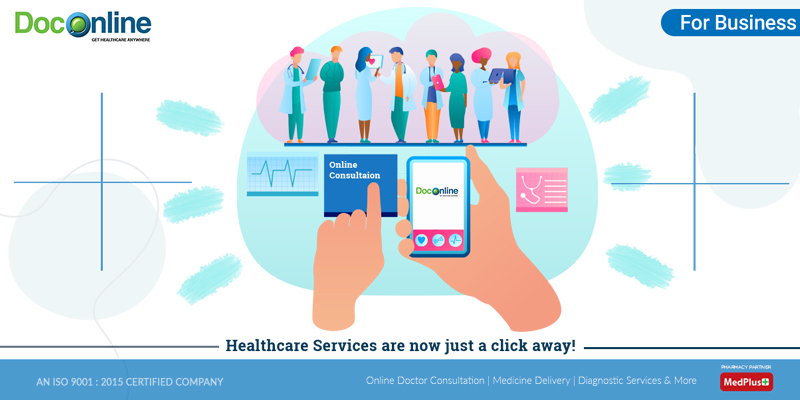Discover the Conveniences of Subscription Based Healthcare for Affordable Medical Care
Discover the Conveniences of Subscription Based Healthcare for Affordable Medical Care
Blog Article
Exactly How Subscription-Based Medical Care Is Changing the Medical Market

The Increase of Membership Health Care
Recently, the healthcare sector has observed a substantial change towards subscription-based designs, mirroring broader consumer trends preferring comfort and predictability. This improvement is driven by the boosting need for more tailored and obtainable treatment solutions. Membership health care, often described as attendant medicine or straight medical care, supplies patients a fixed month-to-month fee for a variety of medical solutions, significantly modifying conventional fee-for-service designs.
The rise of membership healthcare is assisted in by developments in innovation, which allow structured communication in between service providers and clients - subscription based healthcare. Digital systems and telehealth solutions have ended up being indispensable, providing clients the ability to set up consultations, access clinical records, and obtain assessments online. This technological combination not just enhances client interaction yet also enables carriers to supply a lot more efficient care
Moreover, the subscription design straightens with the developing expectations of individuals who seek even more control over their medical care expenses and experiences. While this model is gaining grip, its spreading encounters challenges such as regulatory hurdles and the requirement for broader approval within the conventional medical care ecosystem.
Benefits for Service Providers and patients
Subscription-based health care supplies a wide range of benefits for both people and providers, reshaping the characteristics of treatment. For patients, this design provides improved access to medical care solutions. With a foreseeable monthly cost, people can appreciate unlimited consultations, lowered delay times, and individualized treatment. This setup usually leads to an extra proactive technique to health monitoring, enabling timely interventions that can protect against persistent conditions from intensifying. The monetary openness of membership models reduces the changability associated with standard fee-for-service payment, alleviating the problem of unexpected clinical expenses.
For medical care providers, subscription-based versions cultivate a more gratifying and lasting practice. By protecting a constant profits stream, companies can concentrate on providing premium treatment without the pressure of volume-based solution. This version motivates longer person assessments, cultivating stronger patient-provider relationships and enhancing health outcomes. Furthermore, it supplies carriers the flexibility to introduce and incorporate preventive and alternative care methods. Administrative jobs are frequently structured, decreasing above prices and permitting providers to dedicate more time to patient interaction. In general, subscription-based medical care lines up the incentives of individuals and suppliers, promoting an extra patient-centered and efficient healthcare distribution system.
Trick Attributes of the Version
Regularly, the essential features of the subscription-based health care version highlight its distinct method to providing clinical services. Central to this design is the principle of foreseeable, regular monthly repayments, offering people a thorough range of solutions without the changability of typical fee-for-service structures. This version frequently consists of endless access to key treatment site link services, precautionary treatment, and regular check-ups, guaranteeing that clients can involve with their healthcare service providers proactively instead of reactively.
Furthermore, straight interaction networks, such as telemedicine and messaging systems, are highlighted, permitting individuals to receive prompt suggestions and appointments without needing in-person visits. This improves accessibility and comfort, especially for people with wheelchair restraints or those residing in remote areas. The model also fosters more powerful doctor-patient partnerships, as doctor are incentivized to concentrate on lasting health and wellness outcomes as opposed to short-term brows through.
Additionally, subscription-based medical care typically incorporates technical technologies, such as electronic wellness documents and content health surveillance applications, to give individualized and reliable care. Individuals take advantage of collaborated and continuous care administration, which is tailored to their specific health and wellness needs. Ultimately, these attributes collectively create a patient-centered healthcare experience, prioritizing ease of access, expense openness, and preventative care.

Difficulties and Factors To Consider
While the subscription-based healthcare design uses countless benefits, it is not without its considerations and difficulties. One considerable challenge is ensuring fair accessibility. Registration designs may unintentionally favor those with higher socioeconomic standing, potentially expanding variations in healthcare gain access to for lower-income individuals that might battle with regular monthly costs. This increases ethical worries concerning inclusivity and equity in health care check here shipment.
Another obstacle hinges on governing conformity. Subscription-based health care has to navigate a complicated web of laws that vary by region, consisting of concerns around patient privacy, data security, and state licensing demands. Ensuring compliance without impeding the model's adaptability and innovation can be intimidating for carriers.
Additionally, there is the threat of overutilization or underutilization of services. Individuals paying a taken care of fee could overuse services, resulting in boosted functional costs, while others may underutilize because of be afraid of burdening the system, potentially disregarding required treatment.
Future Leads and Innovations
The landscape of subscription-based healthcare is poised for improvement with arising technologies and evolving prospects. As technology proceeds to breakthrough, the assimilation of expert system and machine discovering offers significant chances to enhance diagnostic precision and improve patient monitoring. Predictive analytics can change precautionary care by recognizing potential wellness risks before they manifest, thus lowering both prices and the concern on healthcare systems.
Furthermore, telemedicine is established to increase within registration designs, offering patients enhanced accessibility to healthcare experts no matter of geographical restraints. This not just assists in continuity of care however likewise encourages individuals to engage more actively in their health and wellness monitoring. In addition, blockchain modern technology uses possible in protecting individual information and making certain interoperability across systems, fostering trust and transparency.
Collaborations in between tech companies and healthcare providers are most likely to yield innovative remedies, boosting client experiences and end results. As these leads appear, subscription-based health care has the prospective to redefine just how treatment is provided and accessed.
Conclusion
Subscription-based healthcare is transforming the clinical market by providing a more obtainable, foreseeable, and patient-centered technique to medical solutions. This design enhances patient-provider relationships, makes certain monetary transparency, and stresses precautionary care via unrestricted assessments and telemedicine. Despite obstacles such as regulative difficulties and prospective disparities in accessibility, the subscription version holds pledge for a more reliable and customized medical care experience. As innovation advances, additionally innovations are most likely to address existing difficulties and optimize healthcare shipment.
Subscription health care, often referred to as attendant medication or straight main care, uses patients a fixed regular monthly cost for an array of medical solutions, substantially altering traditional fee-for-service models.
Furthermore, the membership version straightens with the evolving expectations of patients who seek more control over their healthcare expenses and experiences. For individuals, this version gives boosted accessibility to medical care solutions. On the whole, subscription-based medical care straightens the motivations of people and providers, promoting a more efficient and patient-centered medical care distribution system.
Additionally, telemedicine is set to expand within subscription versions, offering people enhanced access to health care specialists no matter of geographical restrictions. - subscription based healthcare
Report this page